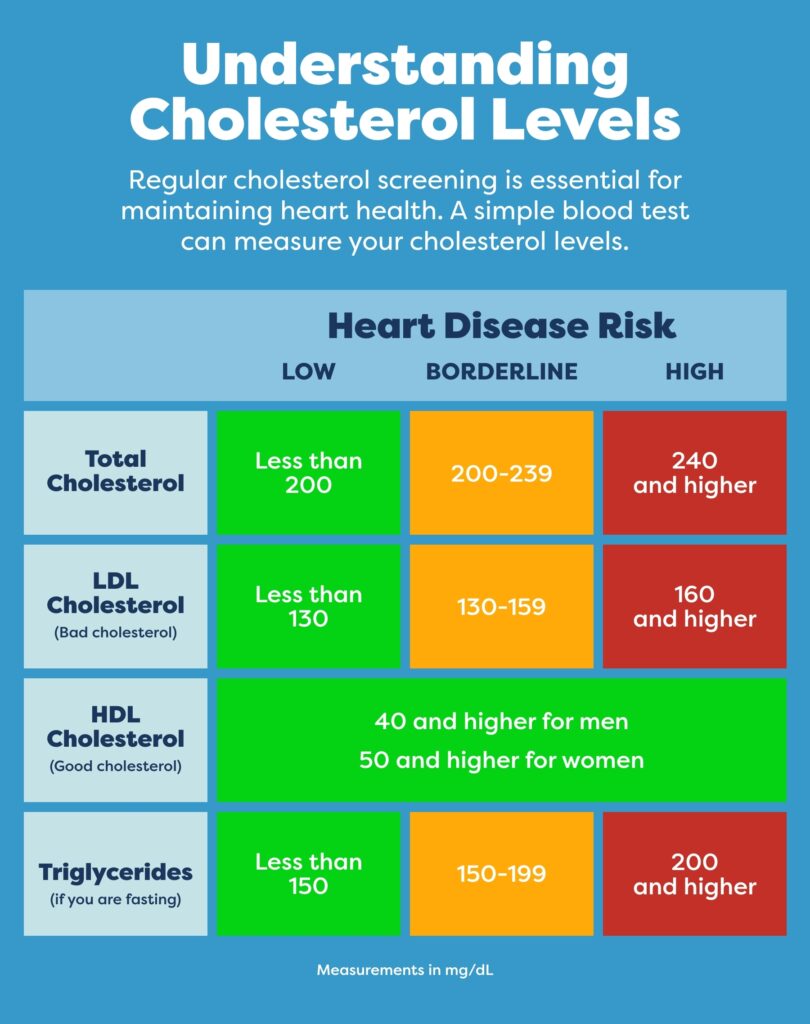Heart Health in Focus: Understanding & Managing Cholesterol
As we enter September, it’s time to focus on a key part of our health: cholesterol.September is National Cholesterol Education Month, aimed at raising awareness about the importance of managing HDL and LDL levels for a healthy heart.
What is Cholesterol?
Cholesterol is a waxy, fat-like substance in your blood. Your body needs it to build cells, make hormones, produce and use vitamin D, and digest food. Your body makes all the cholesterol it needs, but you can also get it from foods like meat, poultry, and full-fat dairy products. However, too much can increase your risk of heart disease and stroke, which are major causes of death worldwide.
Types of Cholesterol
Cholesterol travels through your blood in small packages called lipoproteins. There are two main types:
- High-Density Lipoprotein (HDL) Cholesterol: Known as “good” cholesterol, HDL removes LDL cholesterol by carrying it back to your liver. Your liver can process the LDL and removed from your body. Higher levels of HDL can lower your risk of heart disease.
- Low-Density Lipoprotein (LDL) Cholesterol: Known as “bad” cholesterol, high LDL levels can cause plaque to build up in your arteries. This can narrow or block them, increasing your risk of heart disease and stroke.

What are the Risk Factors?
Several factors can lead to high levels:
- Diet: Eating foods high in saturated fats, and trans fats can raise your levels.
- Lack of Exercise: Not being active can cause weight gain and increase LDL levels.
- Smoking: Smoking reduces HDL, which is essential for counteracting high LDL levels.
- Genetics: High cholesterol can run in families, so knowing your family’s health history is essential. Some people just naturally produce more than their bodies need.
- Age and Gender: Cholesterol levels usually increase as you get older. Before menopause, women generally have lower levels than men of the same age.
Tips for Managing Cholesterol
Taking care of your HDL and LDL levels is vital for your heart. Here are some simple tips to keep your levels healthy:
- Eat a Healthy Diet: Try to limit foods high in saturated fats, like red meat and full-fat dairy. Avoid trans fats found in fried and baked goods. Eating more omega-3 fatty acids, found in fish and flaxseeds, can help lower your LDL numbers.
- Exercise Regularly: Being active can raise your good HDL and lower your bad LDL numbers. Try to get at least 150 minutes of moderate exercise each week. Activities like brisk walking, swimming, or biking are great options.
- Maintain a Healthy Weight: Losing extra weight can lower improve your levels.
- Quit Smoking: If you smoke, quitting can raise your HDL levels and improve your heart health.
- Limit Alcohol: Drinking alcohol in moderation can be okay, but too much can raise your levels and cause other health issues.
- Medication: If healthy habits aren’t enough to manage your levels, your doctor might prescribe medication.
Get a Health Checkup This Month
If you haven’t had your blood work checked in the last 6 months, prioritize your health this September. A simple blood test can give you important information about your heart health. Talk to your doctor about the results so you can understand your risk and make a plan to manage your cholesterol. Don’t have time to visit your doctor? Check with your HR to see if VirtualCheckup is a covered benefit, or visit your companies VirtualCheckup registration page and register.
Cholesterol Education Month is a great reminder to focus on heart health. By educating ourselves, making smart lifestyle choices, and taking charge of our health, we can lower our risk of heart disease and stroke, and live healthier, happier lives. Let’s make this September all about awareness, action, and keeping our hearts healthy!